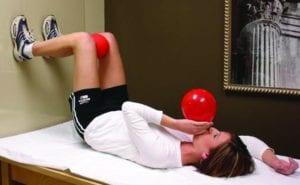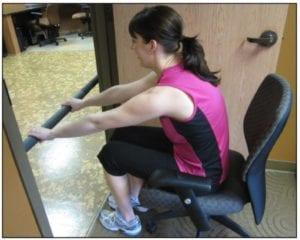Breathing Matters – diaphragm efficiency
- posted: May 07, 2018
Coming in a close second to the heart as our body’s most important muscle, the diaphragm serves as our air pump. It attaches to the ribs and spine, doming and relaxing as we exhale, flattening and contracting as we inhale. Due to its attachment to our skeleton, our body position influences how efficiently it can do its job.
Most runners appreciate the importance of adequate mobility at the hips and ankles to promote a smooth and efficient stride. Often overlooked is the influence of spine and rib mobility on your running form and breathing pattern. Without a neutral spinal position and adequate rib flexibility, the diaphragm’s efficiency decreases and stress increases on secondary breathing muscles of the neck and back. Increased tension in the neck and back can further alter spinal position and inhibit the trunk and hip rotation that needs to occur during running.
An ability to adequately depress (lower) and retract (pull in) your rib cage promotes good diaphragm movement and function of trunk stabilizers. Two examples of exercises that will improve this are on the following page. Activities like these should be as much a part of a runner’s program as a dynamic warm up and hip strengthening.
Exercise 1 – 90-90 Hip Lift with balloon
 1. Lie on your back with your feet flat on a wall and your hips and knees at a 90 degree angle.
1. Lie on your back with your feet flat on a wall and your hips and knees at a 90 degree angle.
2. Place a 4-6 inch ball between your knees.
3. Place your right arm above your head and a balloon in your left hand.
4. Inhale through your nose and exhale through your mouth, performing a pelvic tilt so that your tailbone is slightly raised off the mat. Keep your back flat on the mat. Do not press your feet flat into the wall, instead dig down with your heels. You should feel the muscles on the back of your thighs engage.
5. Inhale through your nose and slowly blow out into the balloon.
6. Pause three seconds with your tongue on the roof of your mouth to prevent airflow out of the balloon.
7. Without pinching the neck of the balloon and keeping your tongue on the roof of your mouth, take another breath in through your nose.
8. Slowly blow out again as you stabilize the balloon with your hand.
9. Do not strain your neck or cheeks as you blow.
10. After the fourth breath in, pinch the balloon and remove it from your mouth, let the air out of the balloon.
11. Relax and repeat the sequence four more times.
Copyright 2012© Postural Restoration Institute®
Exercise 2- Seated Bar Reach
 1. Sit in a chair with your feet flat and your knees at or slightly above hip level.
1. Sit in a chair with your feet flat and your knees at or slightly above hip level.
2. Place a bar on the outside of a door frame and hold onto bar slightly below shoulder level.
3. Inhale through your nose and exhale through your mouth as you round your back by taking up the slack in your arms and rolling your pelvis back so your bottom is tucked under you. You should feel a stretch across your back.
4. Hold this position while you take 4 to 5 breaths in through your nose and out through your mouth, try to fill up the back of your chest wall with air on each inhalation.
5. Relax and repeat four more times.
Copyright 2012© Postural Restoration Institute®
Jason Miller, PT, MS, CSCS, PRC, is a physical therapist at Missoula Bone and Joint Physical Therapy and Sports Medicine. He recently became the first and only physical therapist in the state of Montana to be Postural Restoration Certified™, an approach to physical medicine that analyzes body position, movement, and breathing pattern to get to the root of dysfunction.
The post Breathing Matters – diaphragm efficiency appeared first on Missoula Bone & Joint.
